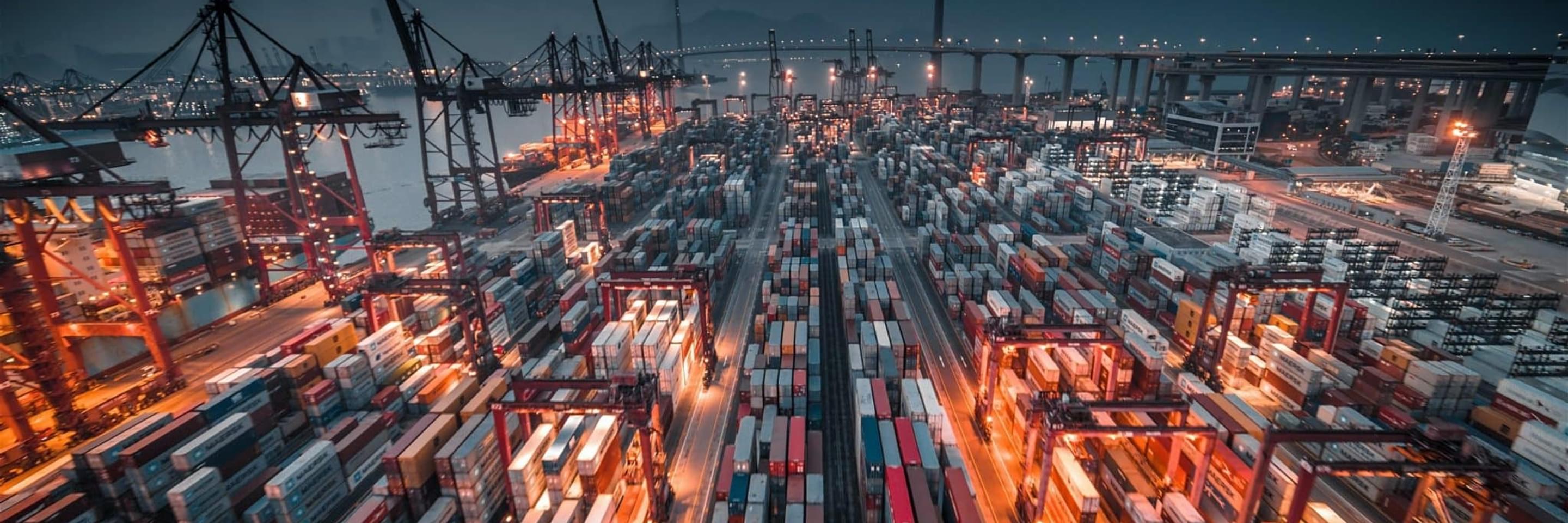
On 2 April 2025, Donald Trump unveiled sweeping new trade tariffs, including a 10% baseline tariff on all imports into the US, citing the need to protect American industry and rebalance trade relationships.
The announcement triggered strong global reactions — China vowed to “fight to the end”, the EU weighed countermeasures, and markets were hit by their worst one-day falls since the beginning of the COVID pandemic amid rising fears of a full-scale global trade war.
Then, just days later, Trump announced a 90-day pause on some of the new tariffs.
Stock markets soared. The S&P 500 saw its biggest single day increase since 2008; the Nasdaq had its best day since 2001, as shares in technology giants like Apple surged.
But where do the US tariff announcements — and partial reversals— leave us? And more importantly, what are the longer-term implications for global trade?
What does the 90-day pause mean?
The 90-day pause resets all reciprocal tariff rates (excluding China) to a 10% baseline, with limited exemptions.
Country-specific and sector-specific tariffs remain in place for Canada and Mexico, as well as certain goods not covered by the reciprocal framework.
While the introduction of a 10% tariff marks a major shift in the US's global trade stance — especially with long-standing partners — the pause delays any increases above 10% until July 2025.
For many developing economies, this pause offers much needed breathing room.
Vietnam, for example, where exports to the US make up nearly 30% of GDP, has, for now, avoided a 46% tariff that could have triggered a recession. Still, the new 10% baseline tariff is a steep climb from the previously lower duties, posing challenges for Vietnamese exporters.
The shift is even more dramatic for trade allies like Australia and South Korea, which previously had free trade agreements eliminating tariffs altogether. They now face a fundamental reset in their economic ties with the US.
For the EU, uncertainty looms large.
Trump has highlighted the Bloc as a threat to US interests, and the added 25% tariffs on cars, steel and aluminium strike at the heart of the EU’s export-heavy economy — particularly its automotive sector. While the EU Commission has hit pause on retaliation, the risk of a full-blown tariff showdown, echoing the US-China trade tensions, is still very much on the table.
But China’s outlook is far harsher.
Following retaliatory actions after ‘Liberation Day’, Trump escalated the trade war, announcing an additional 125% tariff on Chinese exports — bringing the total to a staggering 145%.
This will undoubtedly hurt both sides economically.
What do tariffs mean for the global economy?
Export-driven economies — particularly in Asia and the EU — have seen demand falter, while multinational corporations are reassessing sourcing strategies, relocating production or absorbing rising costs.
Beyond disrupting trade flows, the tariffs have shaken confidence in the rules-based global trading system, fuelling fears of a longer-term shift towards protectionism and economic nationalism.
Major US corporations are sounding the alarm. JP Morgan raised its global recession risk forecast to 60% after the initial tariff rollout. Retail giant Walmart cautioned that profits would be harder to predict amid rising costs and shifting consumer behaviour, while Delta Airlines withdrew its financial guidance entirely, citing deepening uncertainty and weakening demand.
Even with the 90-day pause, economists widely view the tariffs as a structural shift in US trade policy — one that could weigh heavily on global growth. And with the escalating US-China trade war, the stakes are even higher.
China has warned it will retaliate against any country that strikes trade deals undermining its interests, threatening to entangle more nations in a deepening geopolitical and economic conflict.
But is there room for negotiation?
Just this week, the US agreed to reduce import taxes on a limited number of British cars and allow certain steel and aluminium imports to enter the country tariff-free, as part of a new agreement with the UK.
While the full UK-US deal will be developed over the coming months, the initial terms suggest that the US aims to use trade negotiations to secure greater market access for specific products and to ease import conditions into partner countries.
There also appears to be some flexibility on auto and steel tariffs, though any concessions will likely depend on what the US receives in return.
What has been made clear, however, is that the 10% tariff remains non-negotiable — indicating that its removal will not be on the table in any trade discussions.
Find out how companies can respond to tariffs and stay up-to-date with the evolving trade dynamics.
Views from our experts
"President Trump has consistently talked about VAT being a ‘trade barrier’ yet the considered percentage applied to the UK is only 10% (UK VAT is 20%). Although this tariff is significantly lower than even the UK’s closest trading partner (EU), the blanket tariff will have a significant impact on sectors such as pharmaceuticals which have traded products under a tariff-free environment for many years and have complex supply chains that are difficult to untangle without creating potential adverse costs elsewhere. Due to imbedded supply chains, there is little scope for businesses to transfer production to the US, which is a key aim of these tariffs. Feedback from our clients confirms that they are either withdrawing less profitable products from sale in the US or having to increase prices to the consumer."

“The US tariffs place a significant burden on international trade — driving up import costs in the US and consequently undermining competitiveness of EU exporters. Companies on both sides of the Atlantic are forced to either raise prices or absorb the losses. We’re already seeing the potential for reduced production, job cuts and a growing risk of EU countermeasures, which could escalate tensions and deepen the transatlantic trade divide."

“While certainly disruptive to global trade over the last few months, Trump may achieve his short-term objectives through tariff negotiations, reducing US trade deficits and increasing US domestic manufacturing. However, there is concern that the damage done to the US’s reputation – as a stable and safe economy rooted in checks and balances, and the principle of free trade – may be irreparable. In the long-term, the economic cost of losing the world’s trust may far outweigh any gains achieved through tariffs.”

“For decades, the Asia-Pacific region has been a welcoming place for multinationals to relocate part of their supply chains from higher-cost locations. With the rapidly changing trade landscape, companies must now rethink the fundamental reasons for their investments in the region. The traditional definition of ‘cost of business’ needs to be re-evaluated, with a strategic and holistic view to balance supply chain requirements for each destination markets, including Asia-Pacific.”

“For Mexican businesses, the tariffs announced by Trump introduce significant operational uncertainty and put direct pressure on the profit margins of export-oriented companies. Core industries like automotive, auto parts, agribusiness and manufacturing may now face rising costs, potential supply chain disruptions and a loss of competitive edge against global rivals. In this context, companies must revisit their strategic planning — reviewing pricing models, exploring partial relocation of operations, optimising their tax structures and diversifying markets — to mitigate their exposure to US trade volatility.”










